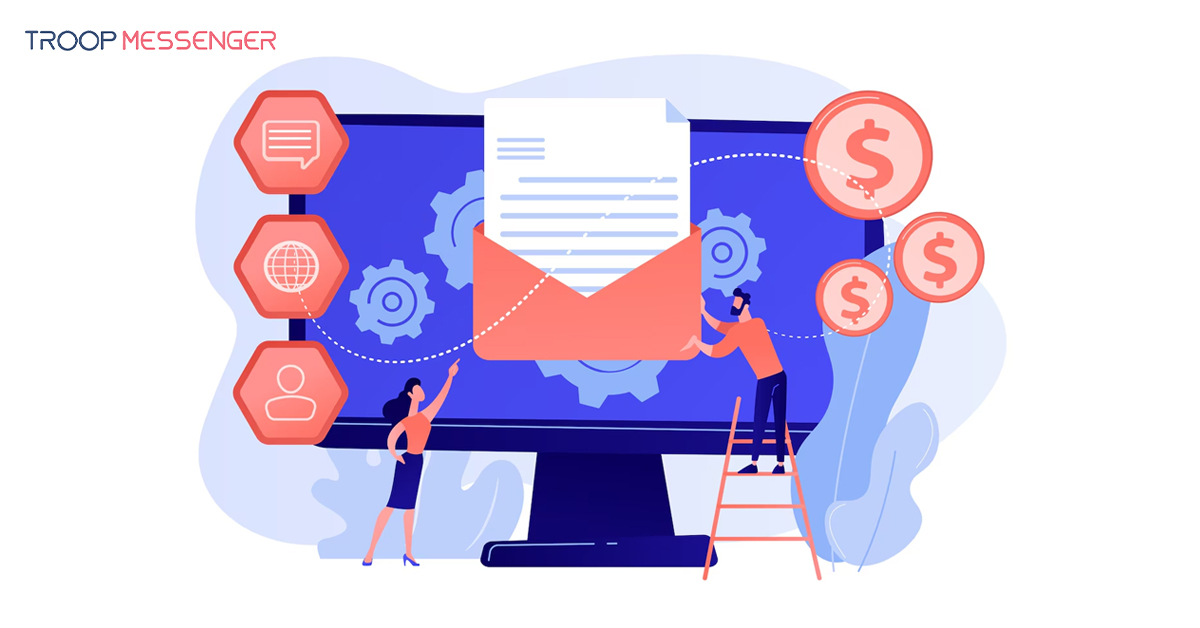Connect with us

Geofencing Examples with Real-world Applications
Geofencing technology has gained popularity in recent times, offering businesses ways to engage with their target audience. By creating boundaries around locations, geofencing enables personalized and location-based marketing strategies.
Geofencing has become an indispensable part of businesses that have a physical location. This marketing tactic helps you target audiences based on their geographic location and improve your brand’s awareness. The first step towards successful geo-fencing implementation is to define geofencing goals for your business clearly and precisely. In this post, we'll delve into real-world instances of how geofencing enriches customer experiences and improves business results, which will help you determine how you must specify geo-fencing goals for your business niche. But before that, let us understand what geofencing means:
Understanding Geofencing:
Geo-fencing is a marketing tactic that allows business owners to send personalized alerts and messages to audiences based on a particular geographic location. This form of marketing works best if you have a physical store to attract infoot customers.
In simple words, geo-fencing enables you to set a perimeter, and when your target audience enters the perimeter, they receive an alert from your business, helping you attract them to your store.
A successful geofencing strategy will look different for different business goals. For instance, if you want to target your competitor’s customers, your strategy will differ from that of a business aiming to improve its brand awareness. In order to target your competitor’s customers, you may want to establish a geofence on their physical location. On the other hand, if you want to improve brand awareness for your business, you must establish a geo-fence near your business's geographical location.
Different Types of Alerts You Can Send Through Geofencing:
Geo-fencing primarily helps you send three types of alerts on your customer’s mobile phone:
- Text messages
- App notifications
- Social media ads
Whenever your target audience enters the specified geographic location, you can send them one or all of the above alerts on their smartphones. This increases the likelihood of people entering your store and becoming more familiar with the products and services that you offer.
Real-World Examples of Geo-Fencing
1. Retail Marketing
One prevalent use of geofencing is seen in retail marketing. Businesses go beyond just the effort to define geofencing and employ this technology to send tailored promotions and offers to customers as they enter or exit a designated area surrounding their store. For instance, a clothing retailer might send customized discounts to customers who frequent competitor stores. This not only attracts customers but also encourages them to opt for their store over competitors.
2. Event Promotions
Geofencing has also demonstrated its value in event promotions. Picture attending a music festival where different stages have geofences set up. Upon entering the vicinity of each stage, attendees receive notifications with details on performances and exclusive merchandise offers. Such targeted marketing not only enhances the experience for attendees but also equips event organizers with valuable insights into attendee behaviors and preferences.
3. Technology Showcase
Geofencing can also be utilized for technology demonstrations, enabling companies to present their devices or software innovations at venues or events. Through this method, businesses can offer an enriching experience for customers by delivering immediate product details as they enter the predetermined virtual boundaries.
4. Food Delivery Industry
The food delivery sector is another field that benefits from the capabilities of geofencing. Companies providing meal delivery services can now streamline their delivery operations by defining designated delivery zones within their target market area using crafted geofences. As a result, these establishments can reduce delivery times and lower costs related to orders outside the designated areas, which ultimately benefits both the service provider and customers.
5. Travel and Accommodation
In the travel and hospitality sector, geofencing technology presents opportunities to elevate customer experiences. For example, hotels can leverage geofencing to send deals to guests nearby. Furthermore, by crafting schedules based on a guest's location, hotels can offer real-time suggestions about attractions, dining options, or activities. This customized approach significantly enhances guests' overall stay experience.
6. Social Media Interaction
Geofencing is widely incorporated in social media marketing strategies, enabling businesses to tailor campaigns according to geographic regions. Social media platforms have adopted geofencing features to help businesses connect with their target audience effectively. Nowadays, companies use location-based hashtag campaigns to engage users and encourage them to share their experiences or participate in contests related to events, thereby generating a buzz around their products or services.
7. Safety and Security
Safety and security are key aspects where geofencing proves its value beyond just marketing. Schools, for example, can utilize geofencing technology to establish boundaries around their premises. This enables them to track students' movements entering and leaving the school premises, ensuring their safety and promptly notifying authorities in case of any entries or exits.
Likewise, businesses can utilize geofencing to enhance security. By setting up perimeters around areas within their facilities, companies can control access that is limited to authorized personnel only. This technology helps prevent access and enhances employee safety.
8. Public Services
Public services also benefit from geofencing applications. For instance, waste management operations can optimize routes using geofencing-equipped collection trucks that alert drivers when they enter areas scheduled for pickups. This streamlines operations by reducing stops and ensuring waste disposal services.
In addition, first responders, like police officers, firefighters, paramedics, and towing services, often depend on alert systems made possible by geofencing technology. By pinpointing incidents or emergencies within zones, public service providers can react swiftly and with greater precision.
9. Small Businesses
Small businesses across various industries can use geo-fencing for precise targeting. For example, you have a fitness center operating in an area where there are numerous other similar businesses. You can use geo-fencing to inform your audience about your business to boost the number of memberships in your center. For this, you must inform the audience that enters the virtual boundary about the interesting discounts and exclusive offers for premium memberships. You can also use success stories as an advertising tactic for geo-fencing to attract customers to your center.
Why Should You Consider Geofencing?
It Makes Reaching Customers Easier:
Everybody carries their mobile phones with them wherever they go. With geofencing, you can target your customer right through their mobile phones. Since this tactic works on a virtual barrier system, your target audience receives notifications about your products and services as soon as they enter the barrier, making reaching them more accessible.
Improves Local Sales:
Geo-fencing helps you earn more conversions and sales for your business by enabling you to build a robust local marketing campaign that drives foot traffic to your store. Imagine this: you have a 50% sale going on in your store. To inform your target audience about this ongoing sale, you must have a strong local marketing campaign that will target the right audience at the right time. This is where geofencing plays a crucial role. With geo-fencing, you can target your audience and make them visit your offline store. In this way, if you have an exciting ongoing offer, geo-fencing helps you notify your target audience when they enter your virtual barrier, helping you reach the right people.
It Improves Your Brand’s Awareness:
Geo-fencing makes your target audience think about your business. So even if your target audience is not yet ready to make a purchase, you will still be at the top of their mind, and whenever they decide to make a purchase, you will be their first choice. Moreover, geo-fencing is also a great tactic to target your old customers by reminding them about your business.
Personalize Your Marketing Strategy:
This marketing strategy helps you send personalized messages to your audience based on their customer behavior, purchase patterns, and location. Personalized marketing helps you better target your audience, thus increasing your chances of turning them into paying customers.
Helps You Stay Ahead of Your Competitors:
Geo-fencing enables you to target your competitor’s customers by placing a geofence on their business’s location. When someone enters the fence, you can send a notification about exciting deals offered by your business, helping you capture your competitor’s existing customers.
Take, for example, Starbucks and Dunkin, two major coffee giants! If someone wants a cup of coffee, they will either visit Dunkin or Starbucks. To target the customers, these two giants may place geo fences on each other’s physical locations to target the other’s customers. So, if you visit Dunkin, you may receive a notification from Starbucks and vice versa.
Conclusion
The instances mentioned above offer a glimpse into how companies in sectors are leveraging geofencing technology to improve customer interaction and achieve superior outcomes. Whether it's tailoring promotions for customers, customizing event experiences, streamlining food delivery services, showcasing innovations at events, or offering personalized travel itineraries—geofencing continues to demonstrate its effectiveness consistently.
Businesses need to contemplate integrating this technology to comprehend its practical applications and enjoy the numerous benefits it offers in terms of operational efficiency and stronger customer connections. Given the progress in geofencing technology, alongside the increased smartphone connectivity—now is a moment for businesses to capitalize on this emerging frontier.







